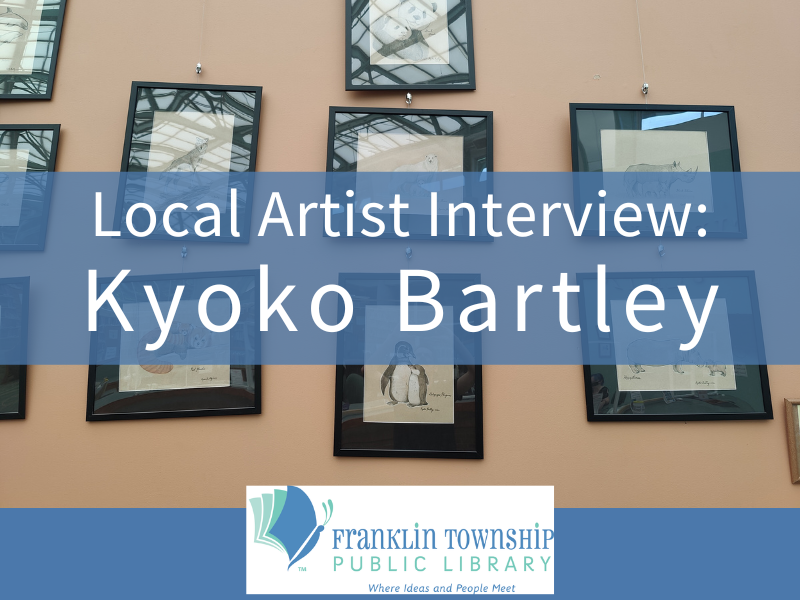
The lobby art display of our main branch currently features the heartwarming work of local artist Kyoko Bartley. In the following interview, we ask her about her diverse body of work, her love of wildlife, and the importance of filmmakers such as Walt Disney and Steven Spielberg to her artistic development.
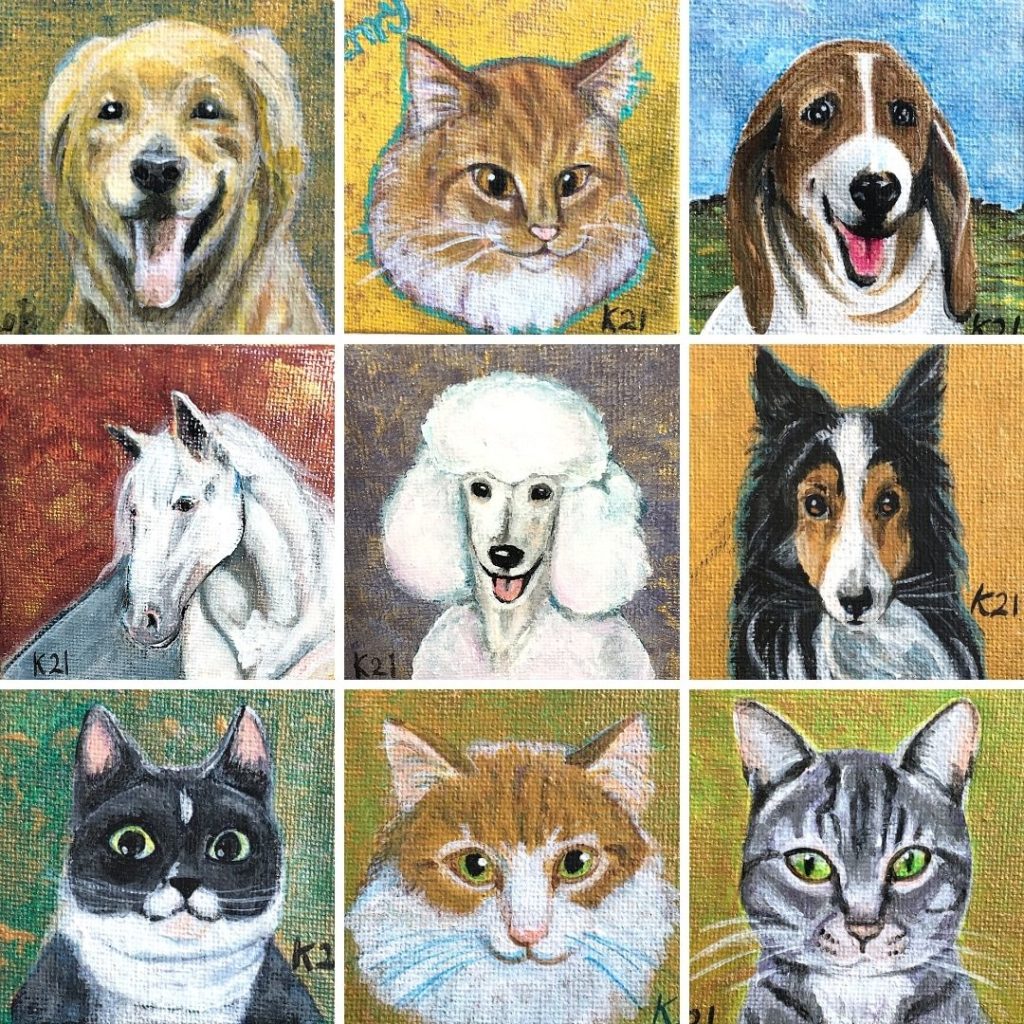
Franklin Township Public Library: How long have you been living in the Somerset area?
Kyoko Bartley: It’s been 6 years. I love this area!
FTPL: How long have you been drawing and painting?
KB: Since I was very young, like late one or two years old. My mother is an artist; she draws, paints, sews, and knits. She does a lot of creative things and she is very good. She did not force me to do any of these things or teach me. I learned drawing and painting especially from watching and asking how she did it.
FTPL: What artists do you consider influences? What other works of art have influenced what you create?
KB: I was heavily influenced by Disney animations. Hand-drawn animation was magic to me. I read Disney’s biography and watched the making of feature animations a lot. Then I learned that those artists were masters of not only drawing and design but also understanding the anatomy of animals and humans and the movement of objects.
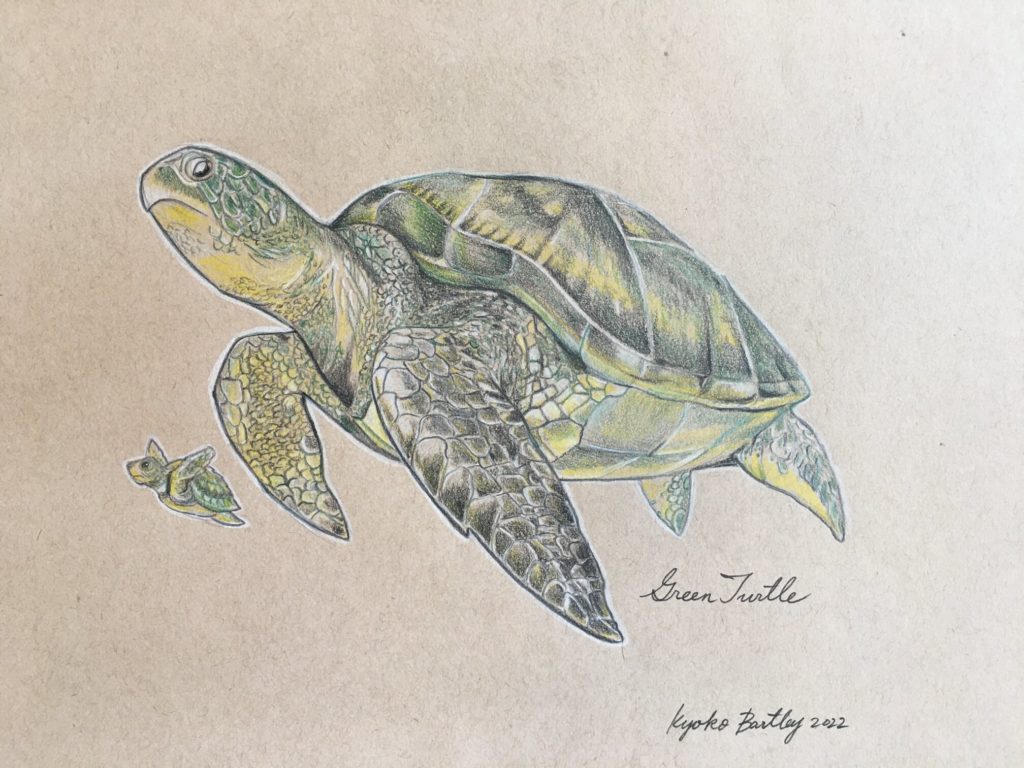
FTPL: What first interested you about American comics and movies?
KB: When I was in pre-K/Kindergarten, I had TB [tuberculosis]. It was not serious fortunately, but I had to stay at home for nearly a year until my doctor said it was safe to go back to school. My mom rented a lot of movies at a local video shop, and we watched almost all the animation and major movies that were available. So, I’ve been heavily influenced by American blockbuster movies since then.
As for the American comics, I started knowing about them when I was nine or so. My family took me to an international bookshop in Tokyo. There, I found that American comics are very thin because they publish with one title monthly. Japanese mangas are usually published in a thick, multi-title style, like Shonen Jump. I thought they were very different, and that difference was cool.
They were not translated into Japanese at all, so I told my parents “this is foreign literature” to persuade them.
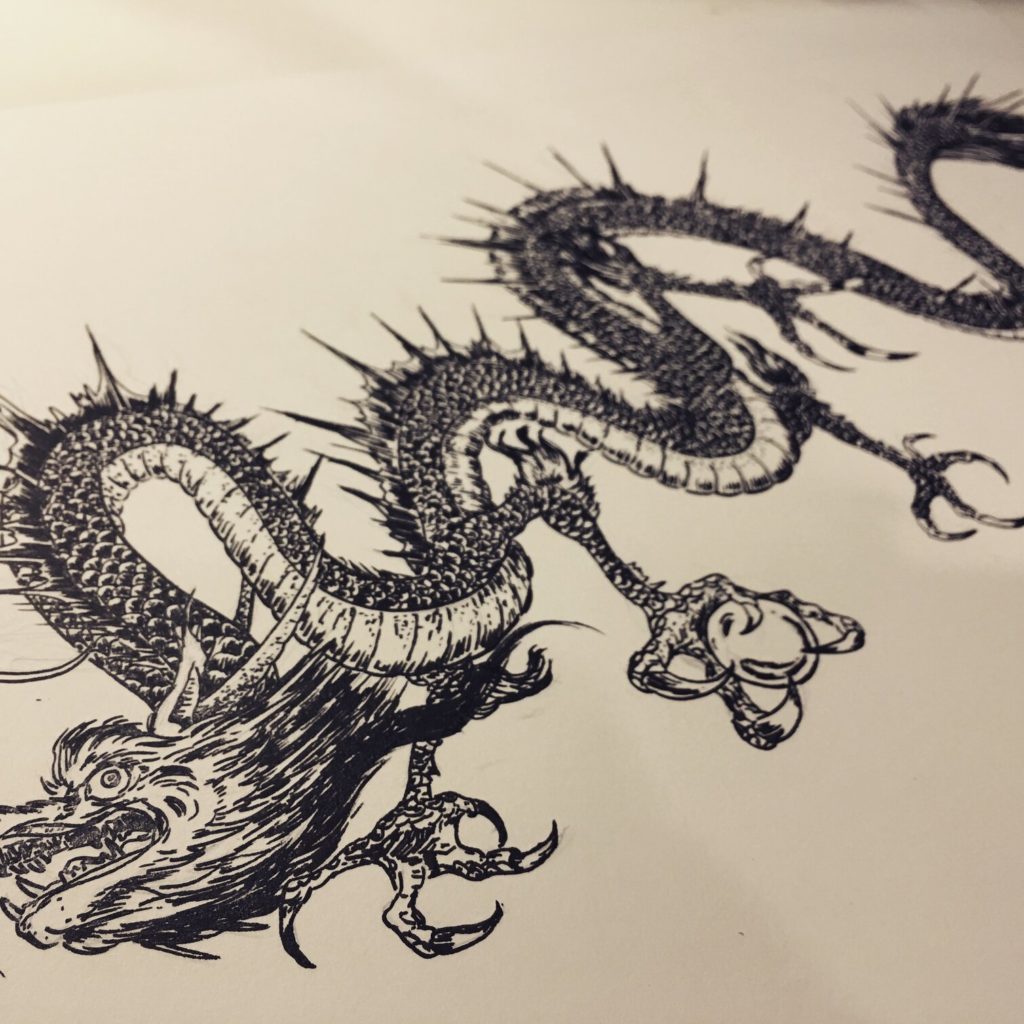
FTPL: You mention in your website bio that you moved to Cincinnati in part because it’s the hometown of Steven Spielberg. What was that experience like? What is your favorite film of his and why?
KB: Steven Spielberg would be one of the most respected giants who influenced my life. I have loved his movies since I was a kid, and I started dreaming about making movies someday that were creative and entertaining. I remember I wrote, “I want to be a movie director like Spielberg” in my elementary school’s yearbook.
American movies were windows to me. I learned about different cultures and the way of storytelling. But, most importantly, I virtually experienced the stories in the same way as when we read a good written story.
Especially in Spielberg’s movies, there is something to grab and enchant my heart. I think his work has wonderful expressions in the literacy of moving images as a medium.
When I watched Schindler’s List, I wrote fan letters to him in English, asking for help with my English teacher and bilingual friends. I should apologize to Mr. Spielberg, as I handwrote the same letter several times because everyone around me said, “you should send him several, not just one, because he will receive many every day. He wouldn’t read yours if you send only one.”
I majored in American culture and movie technology in college, and now it’s been over 10 years of living in the U.S.A. I admire Spielberg’s historical themed works like Schindler’s List, the Color Purple, Amistad, Munich, and Lincoln the more I understand this country. I lived in Cincinnati for several years and experienced a very common type of demographic of the U.S. It helped me to understand American culture a lot.
The processes of making visual art and movies have a lot of similarities. I am still learning the skill of how to deliver a message to viewers through my artwork as a medium.
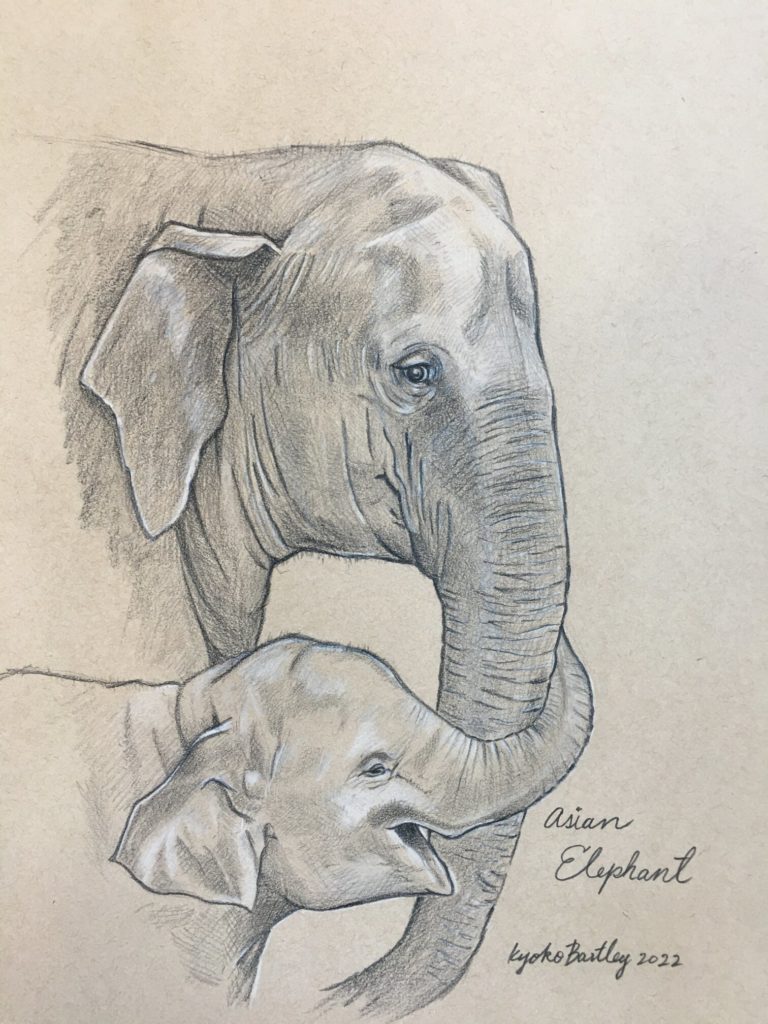
FTPL: What do think are some of the biggest differences in aesthetic tastes between Japan and the U.S.? What are some similarities?
KB: As a visual artist I think, in a lot of aspects, Japanese art is more like graphics and design. In their art history, for a long time, the way they painted or drew motifs was mainly from a 2D perspective, and the balance of using the blank area in the composition is also very characteristic.
Meanwhile, the western art style has developed realistic and 3D visuals, with deep, hidden meaning by the artists. I sometimes wonder what the biggest reason for these differences is.
I want to know what the readers of this blog think. Please feel free to let me know!
FTPL: What got you interested in painting wildlife? What about wildlife are you trying to capture in your paintings?
KB: That started when I made a poster of a Kangaroo in kindergarten. I was encouraged by adults so I could do this continuously. Then my farm animal paintings got an award at a local competition, and when I was seventeen, a realistic drawing of my hamster won a contest at a publishing company.
Currently, fifteen pieces of my hand drawn endangered species series are on display at the Franklin Township Public Library. I often think about human responsibilities towards nature, so I made this series. There are a lot of species that are endangered, such as the jaguar, Asian elephants, green turtles, and monarch butterflies. I hope this display will inspire some people. So, maybe I am trying to capture humanity through my animal art, rather than capturing the animals themselves.
I donate a percentage of the profit of my animal art to animal shelters.
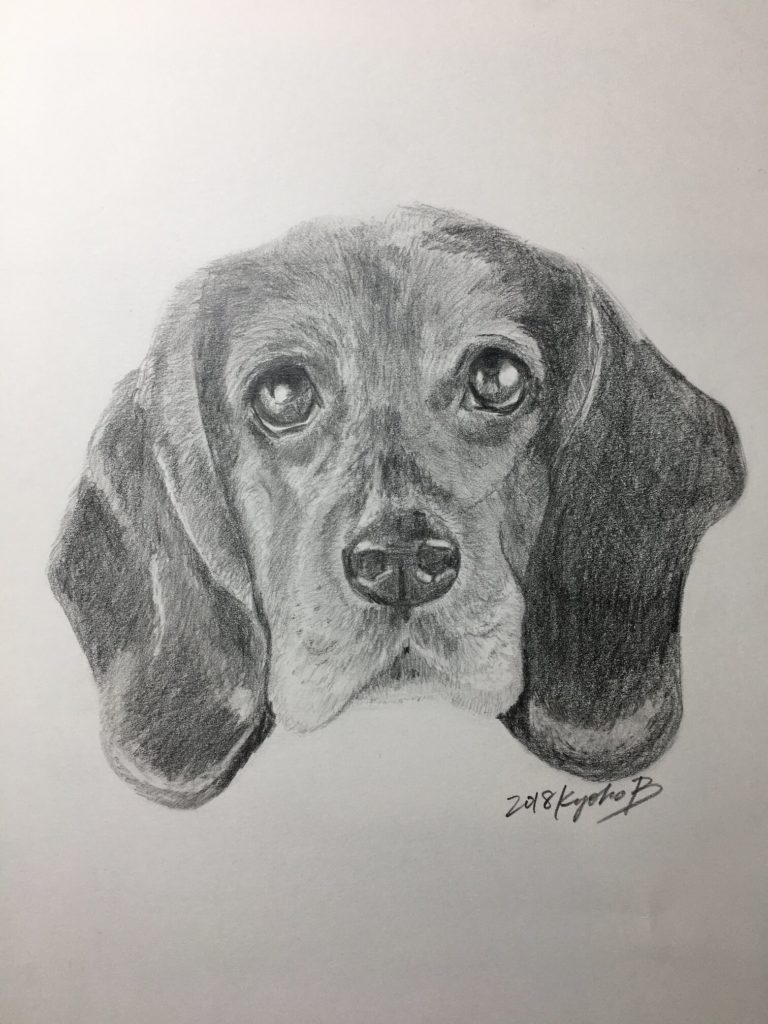
FTPL: Your body of work features many different styles of art. Is there a particular style that comes most naturally to you, or do you have a favorite?
KB: I have been doing commissioned artwork/projects for over twenty-five years, so I enjoy making different styles. However, I like drawing dynamic perspective black and white art for comic book styles, and character designs.
FTPL: What are you working on next? Are there any new styles of drawing or painting that you are looking to explore?
KB: I am working on more endangered species series pet portraits. And “wabi-sabi” themed Japanese painting style of art, which are common seasonal flowers.
They will be displayed somewhere in Mid-Jersey areas. If you encounter them, please have a moment and enjoy!
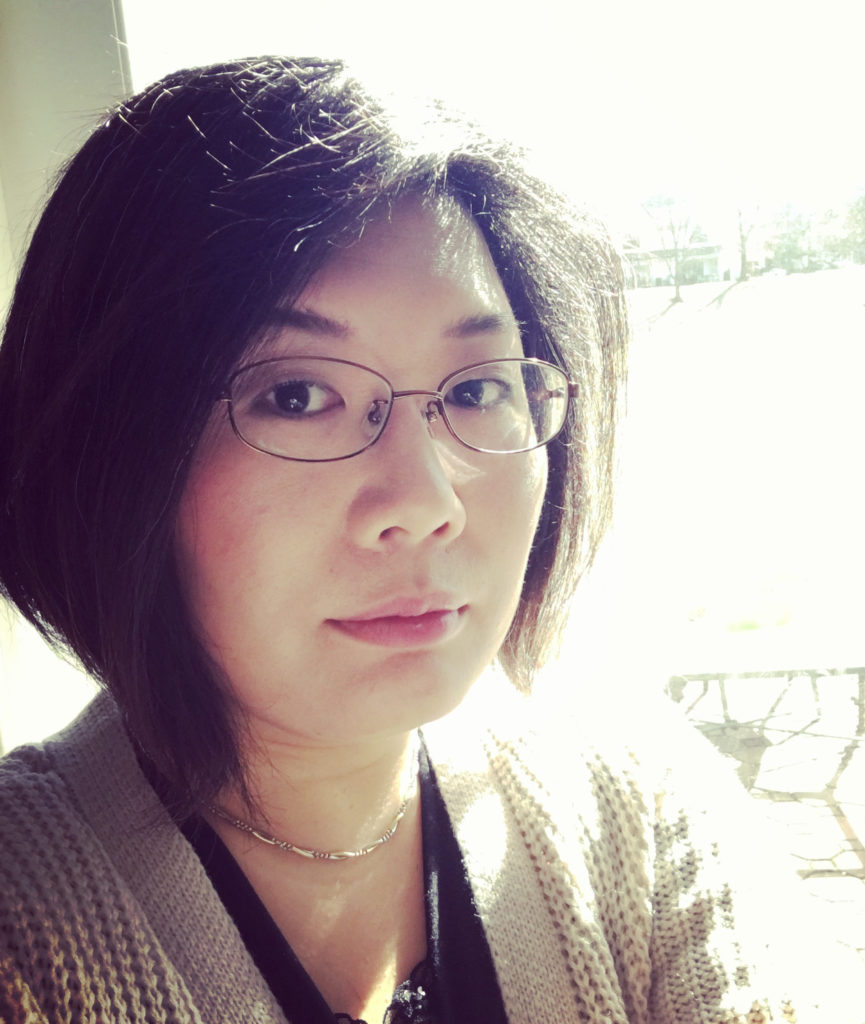
For more information on Kyoko Bartley and her work, please visit her website by clicking here.
The library is always looking for artists, crafters, and collectors to feature on our art wall and in our display cases. For more information, please email events@franklintwp.org with a little about yourself and a link to your website or social media accounts. You can also attach samples of your work. Preference is given to residents of Franklin Township.
Thanks for reading!
George, FTPL



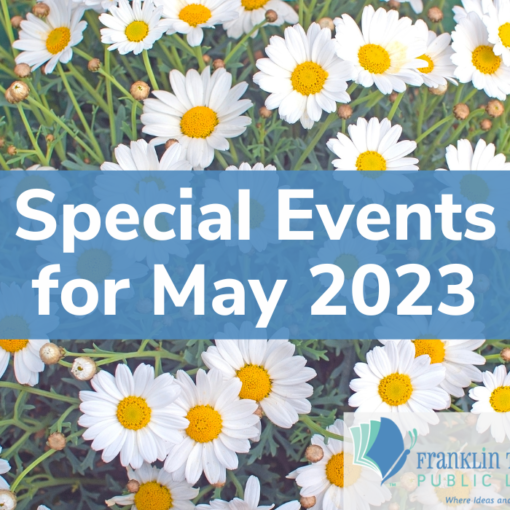
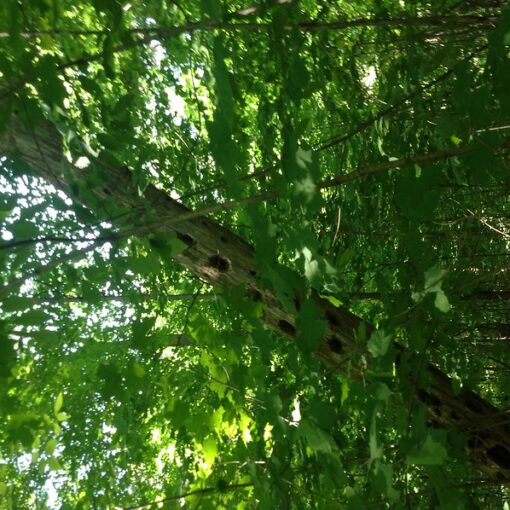
2 thoughts on “Local Artist Display: An Interview with Kyoko Bartley”
I found your comment about the 2-dimensionality in Japanese art fascinating in view of the fact that ikebana is so dependent on 3 dimensions.